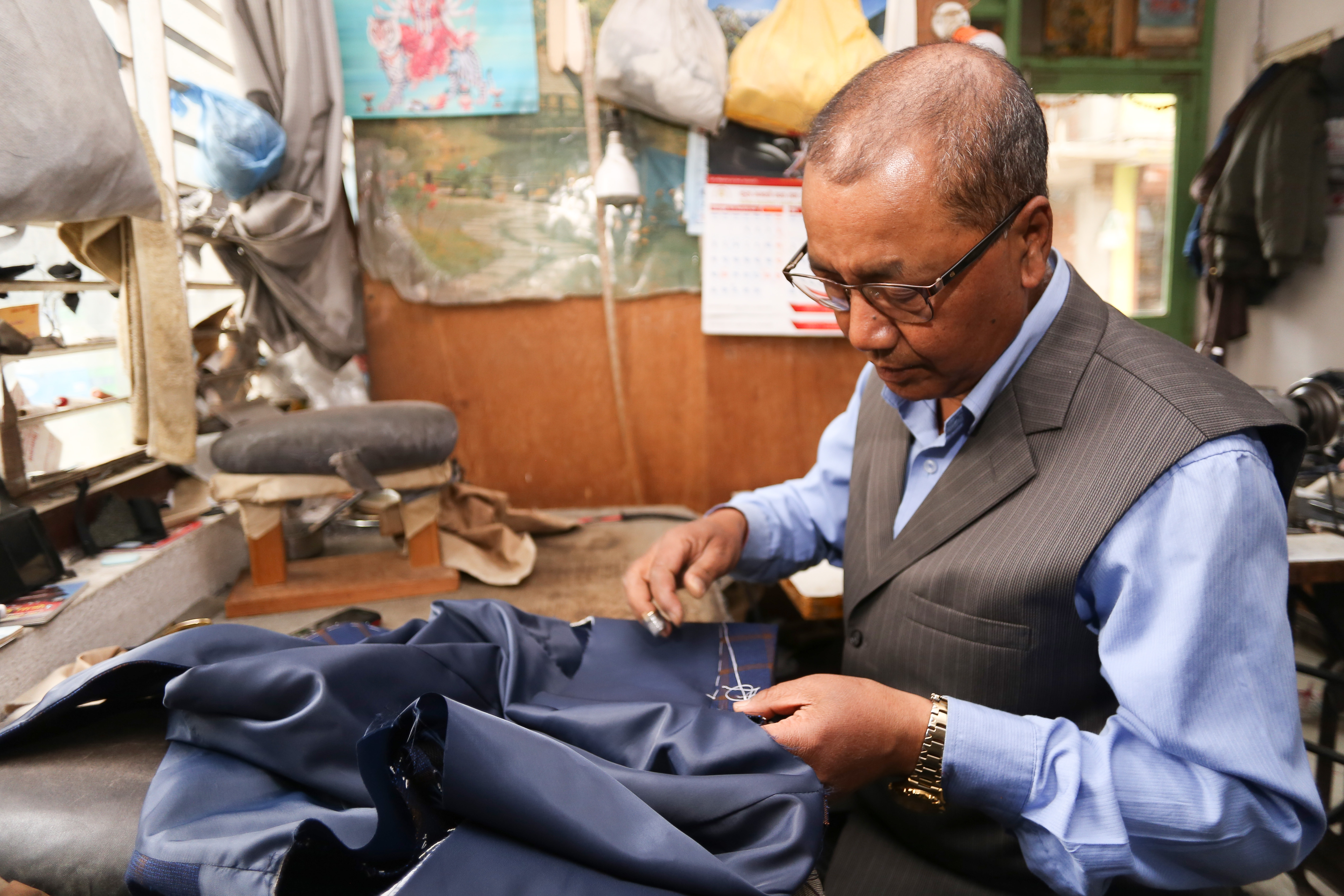Understanding the Tailoring Refine: From Fabric Choice to Last Fitting for the Perfect Wardrobe
The tailoring process is a complicated interplay of art and scientific research, beginning with the vital decision of fabric selection and culminating in the specific adjustments of final fittings. Each material type brings one-of-a-kind high qualities that affect not just the visual appeal however also the garment's durability and viability for numerous celebrations. Understanding the subtleties of customizing techniques can raise one's closet to unprecedented degrees of refinement. As we check out these components additionally, one have to consider exactly how even the smallest details can considerably affect the general result of one's personal style.
Significance of Textile Option
Picking the appropriate textile is critical in the tailoring process, as it straight affects the convenience, toughness, and overall visual of the last garment (tailor perth). The choice of material establishes the structure for the garment's efficiency, design, and functionality. Various fabrics have distinct properties, such as weight, breathability, and stretch, which can considerably affect just how the garment drapes and fits the body
In addition, textile selection influences the garment's long life and simplicity of treatment. Top notch textiles can stand up to damage, preserving their appearance and framework over time, while lower-quality materials may cause pilling or fading. In addition, the appropriate material contributes to the garment's ability to shift across events and seasons, thereby enhancing flexibility.
A customized piece made from a proper material not just showcases craftsmanship yet additionally elevates the user's confidence. Consequently, comprehending the nuances of textile choice is extremely important for any customizing endeavor. It makes sure that the end product not just meets the aesthetic needs of the client yet also straightens with practical demands, therefore achieving a harmonious equilibrium between kind and feature in the customized closet.
Sorts Of Fabrics and Their Uses
Understanding the numerous kinds of textiles available is crucial for making educated decisions during the tailoring process. Each fabric has special attributes that dictate its viability for details garments and events.
Cotton, understood for its breathability and soft qualities, is ideal for casual wear and summer season apparel. Its convenience allows it to be customized into every little thing from shirts to dresses. Woollen, on the other hand, is preferred for its warmth and structure, making it an outstanding selection for official matches and outerwear - tailor perth. Its all-natural elasticity aids garments keep form in time.
Silk exhibits deluxe and is lightweight, making it ideal for eveningwear and delicate blouses; however, it needs mindful handling as a result of its delicacy. Linen, with its textured coating, is a prominent choice for cozy climates, offering a ventilated and crisp feeling, yet it wrinkles quickly, which might affect the garment's appearance.
Artificial fabrics, such as polyester and nylon, deal durability and resistance to wrinkles, making them ideal for everyday wear and energetic clothing. Understanding these textile types and their properties enables for better decision-making, guaranteeing that each customized item not only fits well but additionally straightens with the intended function and event.
The Tailoring Techniques Clarified
The art of customizing depends on a range of strategies that change fabric right into well-fitted garments. Central to this process is pattern composing, where a tailor creates templates based on the customer's dimensions and wanted style. This first step ensures that the garment will certainly fit the wearer appropriately prior to any cutting occurs.
When patterns are developed, reducing techniques come into play. Precision is critical as inaccuracies can result in misfitting garments. Tailors typically make use of various cutting techniques, such as single-layer cutting for intricate styles and multiple-layer reducing for performance on conventional patterns.
Basting is an additional vital strategy, permitting dressmakers to momentarily sew fabric items together for an initial fitting. This approach supplies the chance to analyze the drape and overall silhouette before final sewing.
Seaming methods, consisting of french seams and flat-felled seams, improve the garment's toughness and visual charm. Tailors also employ techniques such as interfacing and extra padding to offer framework and shape to particular locations, like collars and shoulders.
Finally, ending up methods, including hemming and side completing, ensure the garment's long life while providing a sleek look. Together, these methods form the foundation of reliable tailoring, resulting in beautiful, tailor-made apparel.
Suitable Adjustments and Considerations

Trick factors to consider include the shoulder fit, which must neither sag neither restrict activity, dig this and the sleeve length, which must enable comfortable arm movement while maintaining a polished look. Additionally, modifications at the waistline can refine the shape, with options to allow out or take in fabric as needed.
The surge of trousers is an additional essential variable; it ought to sit pleasantly above the hips without triggering discomfort, permitting ease of movement. Hemming sizes for both pants and skirts must show the wearer's preferred design while respecting percentages.

Maintaining Your Tailored Clothes
Constantly comply with the treatment label instructions, which might recommend completely dry cleaning for fragile materials or machine cleaning for even more sturdy materials. Avoid constant laundering, as this can wear down the fabric and alter the garment's form.
Storage space is similarly crucial; usage cushioned hangers for coats and coats to keep shoulder structure, and shop trousers folded nicely or hung to stop creasing. Safeguard garments from direct sunlight, which can YOURURL.com discolor shades and damages fibers.
Additionally, periodic evaluations for small repair services can stop bigger issues. Check for loose switches, fraying joints, or indicators of moth damage, attending to these problems without delay to keep the garment's stability.
Lastly, consider seasonal turning. Wearing customized items in moderation permits textiles to recuperate, extending their life expectancy. By executing these maintenance methods, you can make sure that your customized garments continue to be as pristine as the day you first used them, improving your perfect closet for years ahead.
Verdict
The customizing procedure, incorporating textile option, competent techniques, and accurate fitting modifications, plays a vital function in creating garments that boost both convenience and style. Understanding the relevance of maintenance extends the life of tailored garments, strengthening their worth in a well-curated wardrobe.
Picking the appropriate textile is crucial in the tailoring process, as it straight influences the convenience, durability, and general aesthetic of the last garment. The option of textile sets the structure for the garment's style, performance, and performance. Different fabrics have unique buildings, such as weight, breathability, and stretch, which can substantially influence how the garment drapes and fits the body.
The art of customizing relies on a selection of strategies that transform material right into well-fitted garments.The tailoring process, including material option, knowledgeable techniques, and accurate fitting adjustments, plays a crucial role view publisher site in creating garments that improve both comfort and style.